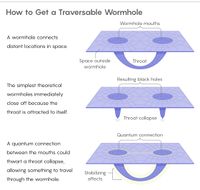SGU Episode 644
| This episode needs: transcription, time stamps, formatting, links, 'Today I Learned' list, categories, segment redirects. Please help out by contributing! |
How to Contribute |
| SGU Episode 644 |
|---|
| November 11th 2017 |
| (brief caption for the episode icon) |
| Skeptical Rogues |
| S: Steven Novella |
B: Bob Novella |
C: Cara Santa Maria |
J: Jay Novella |
E: Evan Bernstein |
| Quote of the Week |
All interpretations made by a scientist are hypotheses, and all hypotheses are tentative. They must forever be tested and they must be revised if found to be unsatisfactory. Hence, a change of mind in a scientist, and particularly in a great scientist, is not only not a sign of weakness but rather evidence for continuing attention to the respective problem and an ability to test the hypothesis again and again. |
| Links |
| Download Podcast |
| Show Notes |
| Forum Discussion |
Introduction
You're listening to the Skeptics' Guide to the Universe, your escape to reality.
What's the Word ()
- Ontology
News Items
Risks of Gluten Free Diet ()
Wormholes ()
Reversing Cell Aging ()
Gadolinium Law Suits ()
Universal Flu Vaccine ()
Who's That Noisy ()
- Answer to last week: Engine starter
Questions and Emails
Question #1: Lunar Lava Tubes ()
I am a grad student in planetary science at UC Santa Cruz in Planetary Science and long time fan of the show. I have worked with radar data and GRAIL gravity data and wanted to let you know I think there is still room for skepticism on the recent lava tubes discovery. For background there is almost no debate that there are lava tubes based on the geomorphology of the lunar surface. Some of the best evidence is the skylights we see which are interpreted as places where the roof of the lava tube has fallen in. The question is how big are they and are we seeing a particular lava tube with GRAIL and Kaguya. Lava tubes are very small features to see from spacecraft altitudes. Because of this the GRAIL lava tube detection is right at the detection limit, which means it is hard to rule out this is noise. They also require, if the detection is real, REALLY big lava tubes. We are talking several km wide! The gravity on the moon is low so that in theory, these large lava tubes could support themselves structurally. That said no one I have talked with is understands how such a large lava tube would form. The radar observations are also interesting but not clear cut in my opinion. Ideally in radar you want to have enough observations you can map out a feature so you are sure it is not a one off error. Because these things are so small and the spacecraft is moving so fast over the surface they have a few single radar pulses for their detection. My current stance is we have two detections that are both right on the edge of being noise. The fact that both methods are giving some agreement in this one area does bolster their case but I don't think it makes it a sure thing. Also to correct an offhand comment, I think the community is in good agreement that lunar core is molten still based on lunar seismic data (See the paper 'Seismic Detection of the Lunar Core' http://science.sciencemag.org/content/331/6015/309). I love the show. Keep up the good work and feel free to ask me to clarify any of this. Carver Bierson Santa Cruz
Science or Fiction ()
Item #1: Doctors report that they successfully transplanted genetically modified skin derived from stem cells to over 80% of a patient’s body. Item #2: A new study finds that stimulating the frontal lobes in order to increase analytical thinking reduces the level of supernatural beliefs in subjects. Item #3: Astronomers report the first discovery of a star that underwent multiple supernova explosions over 50 years and somehow survived.
Skeptical Quote of the Week ()
All interpretations made by a scientist are hypotheses, and all hypotheses are tentative. They must forever be tested and they must be revised if found to be unsatisfactory. Hence, a change of mind in a scientist, and particularly in a great scientist, is not only not a sign of weakness but rather evidence for continuing attention to the respective problem and an ability to test the hypothesis again and again. — Ernst Mayr
S: The Skeptics' Guide to the Universe is produced by SGU Productions, dedicated to promoting science and critical thinking. For more information on this and other episodes, please visit our website at theskepticsguide.org, where you will find the show notes as well as links to our blogs, videos, online forum, and other content. You can send us feedback or questions to info@theskepticsguide.org. Also, please consider supporting the SGU by visiting the store page on our website, where you will find merchandise, premium content, and subscription information. Our listeners are what make SGU possible.
References

|
